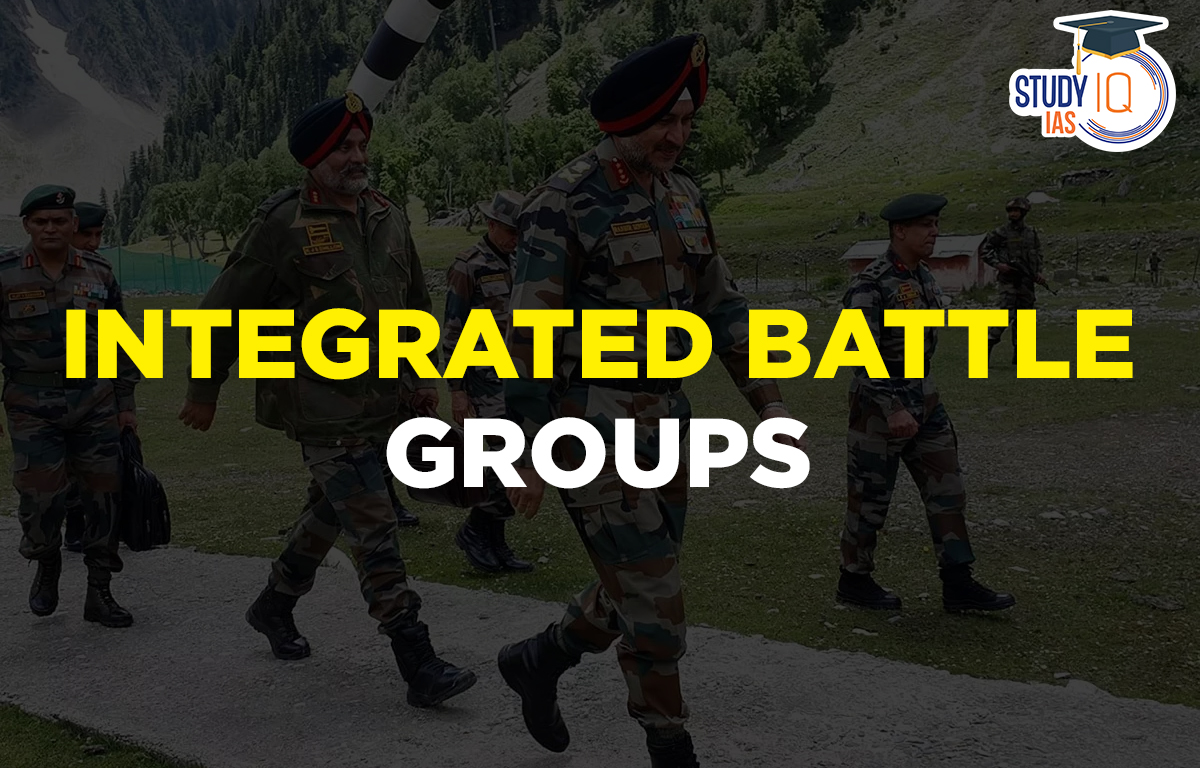Table of Contents
Context: Recently, the Chief of Army Staff announced to convert the “Battle Squads” into “Integrated Battle Groups” in an effort towards structuring and optimization of the force.
Background of Integrated Battle Groups (IBG)
- In 2018, the idea of IBG was formally conceptualized by General Bipin Rawat, the then Chief of Army Staff (CAS). It was tested in the plains and high altitudes in 2019.
- CAS had initiated four major studies to undertake the overall transformation of the Army force. These include the following:
- Restructuring of Army Headquarters;
- Force restructuring which includes the creation of Integrated Battle Groups (IBG);
- Cadre review of officers;
- Review of the terms and conditions of Junior Commissioned Officers and Other Ranks.
About Proposed Integrated Battle Groups (IBG)
- IBGs are brigade sized agile self-sufficient combat formations which, can swiftly launch strikes against adversary in case of hostilities.
- Its objective is to make the force more lethal and suitable to fight a modern war with the support of technology.
- Structure of IBG
- Each IBG would be tailor made based on Threat, Terrain and Task and resources will be allotted based on the three Ts. They need to be light so they will be low on logistics.
- They will be able to mobilize within 12-48 hours based on the location.
- IBGs will be bigger than a brigade (3,000- 3,500) but smaller than a division (10,000- 12,000).
- Each IBG will likely be headed by a Major General.
- IBGs involve the integration of infantry, armoured tank regiments, artillery, Unmanned Aerial Vehicles (UAVs), combat engineers and signals into one fighting unit.
- IBGs will be defensive and offensive: While the offensive IBGs would quickly mobilize and make thrust into enemy territory for strikes, defensive IBGs would hold ground at vulnerable points or where enemy action is expected.
- The composition of every IBG would differ on the basis of the terrain where it is located — an IBG operating in a desert needs to be constituted differently from one operating in the mountains.
Other Similar Measures for Military Modernisation
- Battlefield Management Systems (BMS): The BMS is aimed to integrate combat units- armoured, artillery and infantry regiments, infantry battalions, helicopter flights, etc. into a digital network that will link together all components of the future battlefield.
- Comprehensive Integrated Border Management System (CIBMS): To improve the capability of defence forces in detecting and controlling the cross-border crimes like illegal infiltration, smuggling of contraband goods, human trafficking and cross border terrorism etc.
- Project BOLD-QIT (Border Electronically Dominated QRT Interception Technique): To install technical systems under CIBMS which enables Border Security Forces to equip Indo- Bangla borders with different kind of sensors in unfenced riverine area of Brahmaputra and its tributaries.


 Serious Fraud Investigation Office (SFIO...
Serious Fraud Investigation Office (SFIO...
 Article 142 of Indian Constitution, Sign...
Article 142 of Indian Constitution, Sign...
 Pakistan-Occupied Kashmir (PoK): History...
Pakistan-Occupied Kashmir (PoK): History...





















